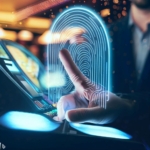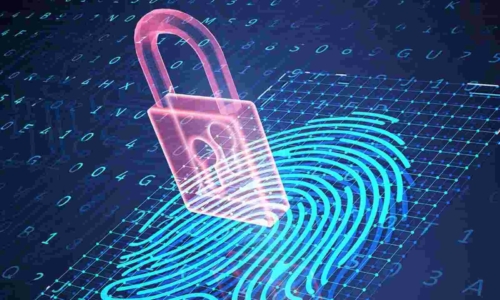Biometric Authentication in Casinos
 In the fast-paced world of casinos, security is of utmost importance. Casinos handle large amounts of cash, attract high-profile individuals, and operate in an environment where the potential for fraud and theft is a constant concern. The casino industry has turned to biometric authentication to combat these challenges to enhance security measures. Biometric authentication offers high accuracy and reliability, making it an ideal solution for the industry. Additionally, biometrics can streamline the customer experience, providing a seamless, personalized service. In this blog post, we will explore the concept of biometric authentication in casinos, its benefits for operators and customers, the various types of biometric authentication methods used, implementation considerations, privacy and data protection concerns, real-life examples, and future developments in the field.
In the fast-paced world of casinos, security is of utmost importance. Casinos handle large amounts of cash, attract high-profile individuals, and operate in an environment where the potential for fraud and theft is a constant concern. The casino industry has turned to biometric authentication to combat these challenges to enhance security measures. Biometric authentication offers high accuracy and reliability, making it an ideal solution for the industry. Additionally, biometrics can streamline the customer experience, providing a seamless, personalized service. In this blog post, we will explore the concept of biometric authentication in casinos, its benefits for operators and customers, the various types of biometric authentication methods used, implementation considerations, privacy and data protection concerns, real-life examples, and future developments in the field.
What is Biometric Authentication in Casinos?
Biometric authentication in casinos refers to using unique biological characteristics to verify the identity of individuals within a casino environment. These characteristics include fingerprints, facial features, iris or retina patterns, voiceprints, or gait analysis. Biometric authentication systems capture and analyze these unique features to accurately establish a person’s identity. Unlike traditional methods such as ID cards or passwords, biometrics are difficult to forge or replicate, making them an effective security measure in casinos.
Benefits of Biometric Authentication in Casinos
Biometric authentication offers numerous benefits for both casino operators and customers. One of the primary advantages is the heightened level of security it provides. Since biometric traits are unique to each individual, the likelihood of unauthorized access or identity fraud is significantly reduced. This helps protect the casino’s assets and the personal information of its customers, fostering a safe and secure gambling environment.
Furthermore, biometric authentication systems can expedite the identification process, leading to improved operational efficiency. Traditional methods, such as ID checks or PIN codes, can be time-consuming and prone to errors. Biometric systems, on the other hand, provide a fast and accurate means of identifying individuals, allowing for smoother entry and exit procedures. This not only saves time but also enhances the overall customer experience.
Types of Biometric Authentication in Casinos
Casinos employ various biometric authentication methods to enhance security and streamline operations. Let’s explore some of the most commonly used methods:
- Fingerprint Recognition: Fingerprint recognition is one of casinos’ oldest and most widely adopted biometric authentication techniques. It relies on the unique patterns and ridges on an individual’s fingers to verify identity. Fingerprint scanners can be installed at various entry points within a casino, including entrances, high-value gaming areas, or cash handling areas.
- Facial Recognition: Facial recognition technology has gained significant traction recently and is widely used in casinos. It analyses facial features such as the distance between the eyes, the nose’s shape, and the face’s contours to create a unique identifier for each individual. Facial recognition can be used for real-time identification at entry points and continuous surveillance within the casino premises.
- Iris Recognition: Iris recognition uses unique patterns within the eye’s iris to identify individuals. This method offers a high level of accuracy and is often used in conjunction with other biometric techniques. For example, Iris recognition can benefit high-security areas requiring stringent access controls, such as VIP gaming rooms or cash-handling areas.
- Voice Recognition: Voice recognition technology analyses an individual’s vocal characteristics, such as pitch, tone, and pronunciation, to verify their identity. Voice recognition can be used for remote authentication, such as when customers call the casino’s customer service center or to access restricted areas within the premises.
 Streamlining Customer Experience with Biometric Authentication in Casinos
Streamlining Customer Experience with Biometric Authentication in Casinos
In addition to enhancing security, biometric authentication can significantly improve the customer experience in casinos. By implementing biometric systems, casinos can offer faster facility access, eliminating the need for time-consuming ID checks or manual verification processes. Instead, customers can scan their biometric data at entry points, granting them immediate access to gaming areas, restaurants, or entertainment venues. This streamlined access not only saves time but also enhances the overall convenience and satisfaction of the customers.
Moreover, biometric authentication enables personalized services. Casinos can tailor their offerings to individual preferences by associating biometric data with customer profiles. For instance, a customer’s favorite games, dining preferences, or seating arrangements can be automatically recognized and provided, creating a more enjoyable and customized experience. This level of personalization enhances customer loyalty and satisfaction, leading to repeat visits and increased revenue for the casino.
Implementation Considerations for Biometric Authentication in Casinos
Implementing biometric authentication systems in casinos requires careful planning and consideration. Here are some key factors to keep in mind during the implementation process:
- Integration with Existing Systems: Biometric systems should seamlessly integrate with the casino’s existing infrastructure, including access control systems, surveillance systems, and customer databases. Compatibility with the casino’s software and hardware is crucial to ensure a smooth implementation without disrupting existing operations.
- Scalability: The chosen biometric authentication solution should be scalable to accommodate the casino’s growth and changing requirements. As the casino expands or introduces new services, the biometric system should be able to handle increased data volumes and user demands without compromising performance.
- Training and Support: Proper training and support are essential for staff and customers. Casino employees should receive comprehensive training on operating the biometric systems and handling any issues that may arise. Additionally, customers should be provided with clear instructions and assistance for enrolling their biometric data, ensuring a smooth enrollment process.
- Compliance with Regulations: Ensuring that implementing biometric authentication in casinos complies with applicable privacy laws and regulations is crucial. This includes obtaining customer consent, securely storing biometric data, and implementing robust data protection measures. In addition, adhering to these regulations helps build trust and confidence among customers regarding the casino’s commitment to their privacy and data security.
Privacy and Data Protection in Biometric Authentication
As with any technology that involves personal data, privacy and data protection are important considerations when implementing biometric authentication in casinos. Casinos must establish robust security measures to protect biometric data from unauthorized access or misuse. Biometric information should be encrypted, securely stored, and only accessible to authorized personnel.
Transparency is critical in addressing privacy concerns. Casinos should communicate their biometric authentication practices to customers, including how the data will be used, stored, and shared. Obtaining informed consent and giving individuals control over their data can help build trust and alleviate privacy concerns.
Real-life Examples of Biometric Authentication in Casinos
Several casinos and gambling establishments have successfully implemented biometric authentication to enhance security and streamline operations. For example:
- The Marina Bay Sands Casino in Singapore uses facial recognition technology at its entry points, enabling quick and secure identification of guests and improving the overall customer experience.
- The Venetian Resort in Las Vegas has implemented fingerprint recognition to access VIP gaming areas, ensuring a seamless and exclusive experience for high rollers.
These examples showcase the successful integration of biometric authentication in the casino industry and highlight its positive impact on security and customer satisfaction.
Future Developments in Biometric Authentication for Casinos
The field of biometric authentication is continuously evolving, and the casino industry is likely to benefit from future advancements. Emerging technologies such as palm vein recognition, 3D facial recognition, and behavioral biometrics hold promise for enhanced security and improved customer experiences. Additionally, these advancements may enable more accurate and efficient authentication methods, further reducing the risk of fraud and providing a seamless customer journey.
Palm Vein Recognition
Palm vein recognition is a cutting-edge technology that analyses the unique patterns of veins in an individual’s palm. By capturing and analyzing these patterns, palm vein recognition offers a highly secure and accurate form of biometric authentication. The non-invasive nature of the technology, combined with its low false acceptance and rejection rates, makes it an attractive option for the casino industry.
3D Facial Recognition
3D facial recognition is another promising advancement in biometric authentication. Traditional facial recognition systems analyze 2D images, which can be susceptible to variations in lighting and facial expressions. However, 3D facial recognition technology captures depth information, enabling more accurate identification even in challenging conditions. This technology can provide an added layer of security and convenience for both operators and customers in casinos.
Behavioral Biometrics
Behavioral biometrics is a unique approach that analyses an individual’s behavioral patterns, such as typing rhythm, mouse movement, or touchscreen gestures. By capturing these patterns, casinos can create a behavioral profile for each customer, allowing continuous authentication without detailed verification. This technology can enhance security without causing inconvenience to the customers, as it works seamlessly in the background.
As these technologies continue to mature, casinos may also explore the integration of multiple biometric modalities. For example, combining different biometric methods, such as facial recognition with palm vein or voice recognition, can enhance security by creating a multi-factor authentication system. This approach significantly reduces the risk of impersonation or unauthorized access, providing additional protection for casinos and their customers.
Furthermore, advancements in artificial intelligence (AI) and machine learning algorithms are poised to revolutionize biometric authentication in casinos. These technologies can improve the accuracy and speed of biometric matching, making authentication processes even more efficient and reliable. In addition, AI-powered systems can adapt and learn from new data, continuously improving performance.
Conclusion
Biometric authentication is revolutionizing the casino industry by enhancing security measures and streamlining the customer experience. Its ability to provide accurate identification, expedite entry procedures, and offer personalized services makes it an invaluable tool for casinos. However, careful implementation, compliance with regulations, and robust data protection practices are necessary to address privacy concerns. As biometric technology advances, casinos can expect even greater security and efficiency, ensuring their customers a safe and enjoyable experience.
